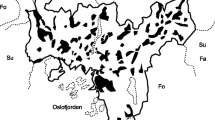Abstract
Ecologists increasingly use network theory to examine animal association patterns. The gambit of the group (GoG) is a simple and useful assumption for accumulating the data necessary for a network analysis. The gambit of the group implies that each animal in a group is associating with every other individual in that group. Sampling is an important issue for networks in wild populations collected assuming GoG. Due to time, effort, and resource constraints and the difficulty of tracking animals, sampled data are usually a subset of the actual network. Ecologists often use association indexes to calculate the frequency of associations between individuals. These indexes are often transformed by applying a filter to produce a binary network. We explore GoG sampling using model networks. We examine assortment at the level of the group by a single dichotomous trait, along with many other network measures, to examine the effect of different sampling regimes, and choice of filter on the accuracy and precision with which measures are estimated. We find strong support for the use of weighted, rather than filtered, network measures and show that different filters have different effects depending on the nature of the sampling. We make several practical recommendations for ecologists planning GoG sampling.




Similar content being viewed by others
References
Bejder L, Fletcher D, Bräger S (1998) A method for testing association patterns of social animals. Anim Behav 56:719–725
Cairns SJ, Schwager SJ (1987) A comparison of association indexes. Anim Behav 35:1454–1469
Clutton-Brock TH, Guiness FE, Albon SD (1982) Red deer: behaviour and ecology of two sexes. University of Chicago Press, Chicago
Croft DP, Arrowsmith BJ, Bielby J, Skinner K, White E, Couzin ID, Magurran AE, Ramnarine I, Krause J (2003) Mechanisms underlying shoal composition in the Trinidadian guppy, Poecilia reticulata. Oikos 100:429–438
Croft DP, Krause J, James R (2004) Social networks in the guppy (Poecilia reticulata). Proc R Soc London 271:S516–S519
Croft DP, James R, Ward AJW, Botham MS, Mawdsley D, Krause J (2005) Assortative interactions and social networks in fish. Oecologia 143:211–219
Croft DP, James R, Krause J (2008) Exploring animal social networks. Princeton University Press, Princeton
Croft DP, Krause J, Darden SK, Ramnarine IW, Faria JJ, James R (2009) Behavioural trait assortment in a social network: patterns and implications. Behav Ecol and Sociobiol 63:1495–1503
Cross PC, Lloyd-Smith JO, Bowers JA, Hay CT, Hofmeyr M, Getz WM (2004) Integrating association data and disease dynamics in a social ungulate: bovine tuberculosis in African buffalo in the Kruger National Park. Ann Zool Fenn 41:879–892
Ginsberg JR, Young TP (1992) Measuring association between individuals or groups in behavioural studies. Anim Behav 44:377–379
Granovetter M (1974) Getting a job. Harvard University Press, Cambridge, MA
Krause J, Ruxton GD (2002) Living in groups. Oxford University Press, Oxford University
Lusseau D (2003) The emergent properties of a dolphin social network. Proc R Soc Biol Sci Ser B 270:186–188
Lusseau D, Newman MEJ (2004) Identifying the role that individual animals play in their social network. Proc R Soc Biol Lett 271:S477–S481
Lusseau D, Whitehead H, Gero S (2008) Incorporating uncertainty in the study of animal social networks. Anim Behav 75:1809–1815
Mitchell M (1998) An introduction to genetic algorithms. MIT, Cambridge, Massachusetts
Newman MEJ (2003) The structure and function of complex networks. SIAM Review 45:167–256
Okubo A (1986) Dynamic aspects of animal grouping: swarms, schools, flocks, and herds. Adv Biophys 22:1–94
Sundaresen SR, Fischhoff IR, Rubenstein DI (2007) Network metrics reveal differences in social organization between two fission-fusion species, Grevy’s xebra and onager. Oecologia 151:140–149
Wasserman S, Faust K (1994) Social network analysis: methods and applications. Cambridge University Press, New York
Whitehead H (1999) Testing Association Patterns of Social Animals. Anim Behav 57:F26–F29
Whitehead H (2008) Analyzing animal societies: quantitative methods for vertebrate social analysis. University of Chicago Press, Chicago
Whitehead H, Dufault S (1999) Techniques for analyzing vertebrate social structure using identified individuals: review and recommendations. Adv Study Behav 28:33–74
Wolf JBW, Mawdsley D, Trillmich F, James R (2007) Social structure in a colonial mammal: unravelling hidden structural layers and their foundations by network analysis. Anim Behav 74:1293–1302
Acknowledgments
We would like to thank two anonymous referees, Darren Croft, Jason Noble, and Jon Pitchford for their valuable input. DWF is funded by NERC grant NE/E016111/1.
Author information
Authors and Affiliations
Corresponding author
Additional information
Communicated by J. Krause
Electronic supplementary materials
Below is the link to the electronic supplementary material.
Rights and permissions
About this article
Cite this article
Franks, D.W., Ruxton, G.D. & James, R. Sampling animal association networks with the gambit of the group . Behav Ecol Sociobiol 64, 493–503 (2010). https://doi.org/10.1007/s00265-009-0865-8
Received:
Revised:
Accepted:
Published:
Issue Date:
DOI: https://doi.org/10.1007/s00265-009-0865-8




